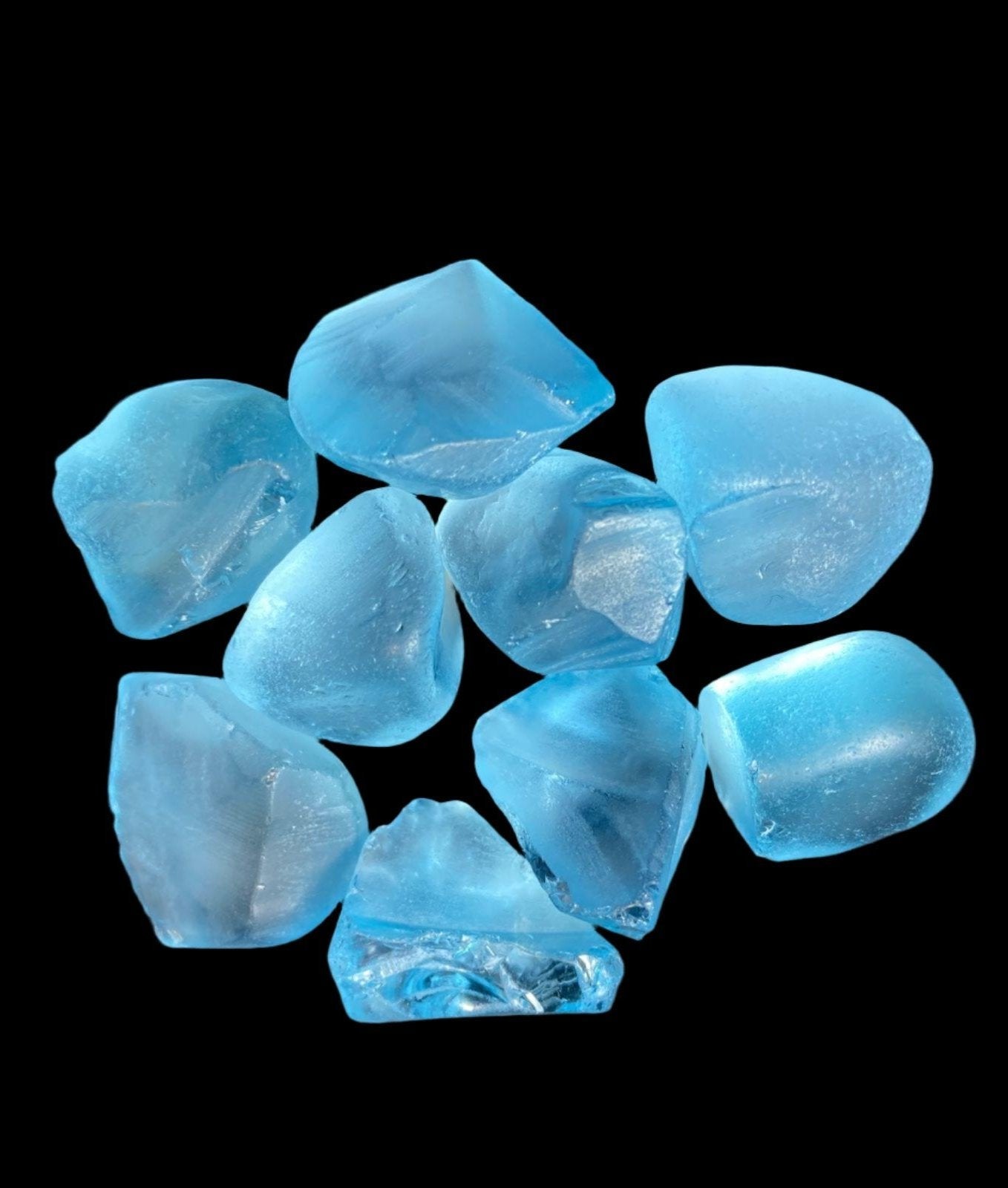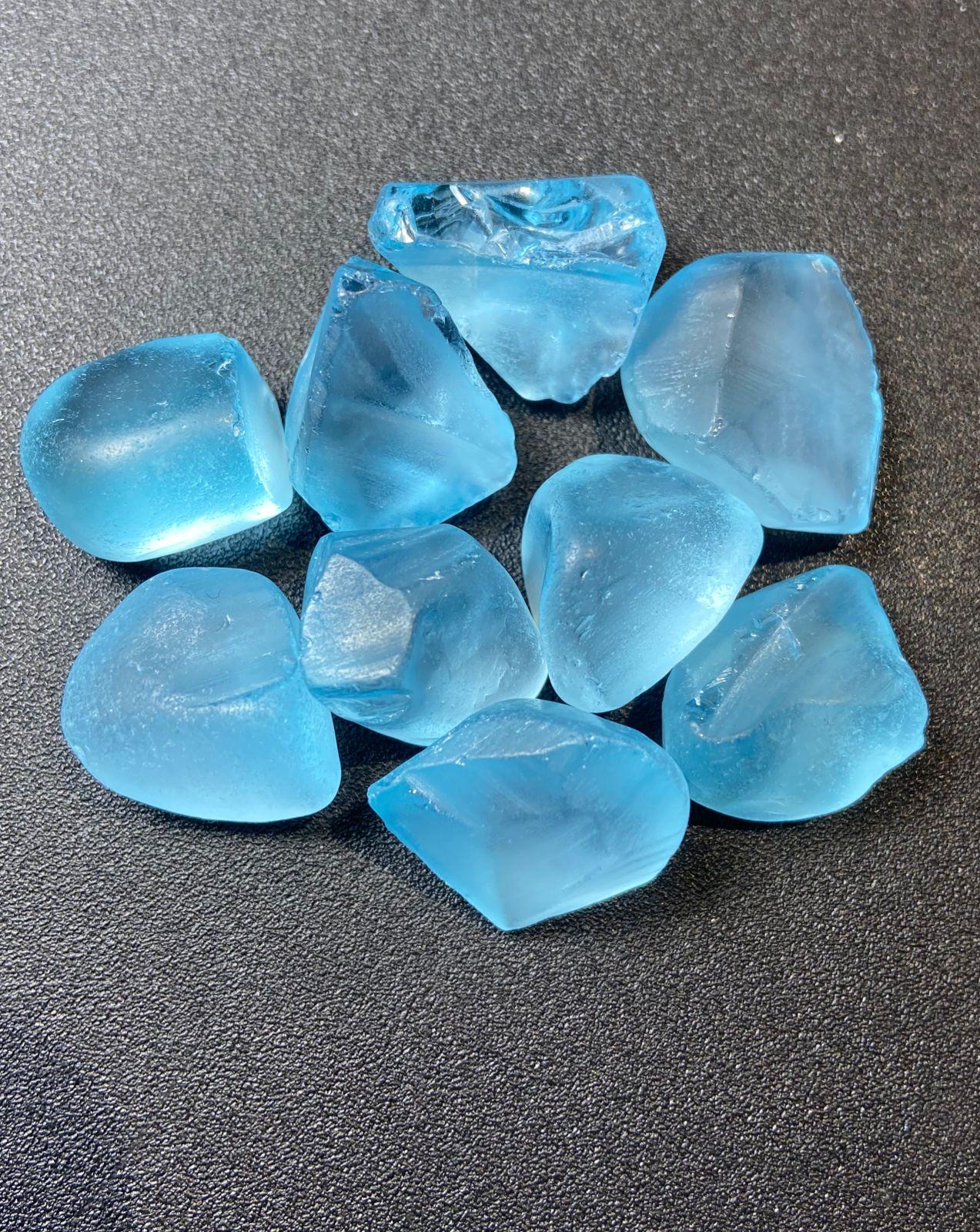
Product sold out. PR-EORDER to get a discount. Contact us for similar items—Min. order: $200 USD. Consult via Live Chat, WhatsApp, or Email before ordering.
Gemstone Specification
| Specification | Details |
|---|---|
Stone Name | Topaz |
Gems Type | Semi-Precious Gemstones |
Total Weight | 50 grams |
Color of Gems | Neo Blue |
Clarity | Eye Clean, Loupe Clean, and VVS |
Origin | Brazil |
Treatments | Heated |
Birthstones | November |
Category Types | Facet Rough |
Deal Type | Small Bulk Lots / Start Up Deals |
| Specification | Details |
|---|---|
Stone Name | Topaz |
Gems Type | Semi-Precious Gemstones |
Total Weight | 50 grams |
Color of Gems | Neo Blue |
Clarity | Eye Clean, Loupe Clean, and VVS |
| Specification | Details |
|---|---|
Origin | Brazil |
Treatments | Heated |
Birthstones | November |
Category Types | Facet Rough |
Deal Type | Small Bulk Lots / Start Up Deals |
Product Description
50.70 grams Facet grade Swiss Blue Raw Topaz for cutting. Clarity of stones have eye clean to loupe clean.
- Stone: Swiss Blue Topaz
- Sizes : 50.70 grams
- Average: 6.5 grams per piece
- Clarity: Eye Clean to Loupe Clean
- Treatment: Heated
- Origin: Brazil
Technical Analysis of Swiss Blue Raw Topaz
Material Characteristics
- Species: Topaz (Al₂SiO₄(F,OH)₂)
- Hardness: 8 on Mohs scale
- Specific Gravity: 3.49-3.57
- Crystal System: Orthorhombic
- Refractive Index: 1.609-1.643 (biaxial positive)
- Treatment: Heat-treated Brazilian topaz
- Total Weight: 50.70 grams (approximately 253.5 carats)
- Average Piece Size: 6.5 grams (~32.5 carats)
Visual Assessments
The rough topaz parcel shows quality transparency with the characteristic Swiss blue color achieved through heat treatment. The stones display good size distribution for faceting, with clean crystal faces and minimal visible inclusions.
FAQs for Gemstone Cutters & Lapidary Artists
Q: What makes Swiss blue topaz ideal for faceting? A: Swiss blue topaz offers exceptional hardness (8), excellent clarity, and brilliant luster when properly cut. The heat-treated blue color is stable and won't fade with normal wear.
Q: What cutting challenges should I expect? A: Topaz has perfect cleavage parallel to the base, making it prone to splitting along this plane. The material is also brittle despite its hardness, requiring careful handling during all cutting stages.
Q: What's the best orientation for cutting these pieces? A: Always orient the table perpendicular to the c-axis to minimize cleavage risks. Examine each piece under magnification to identify the cleavage direction before planning your cut.
Q: What yield can I expect from this rough? A: With eye-clean to loupe-clean clarity, expect 35-50% yield depending on the final cut style. Conservative cutting may yield higher percentages but smaller stones.
Q: Are there any treatment considerations? A: The heat treatment is permanent and stable. However, avoid excessive heat during cutting as it may cause thermal shock and cracking.
Q: What cuts work best for Swiss blue topaz? A: Brilliant cuts, emerald cuts, and cushion cuts showcase the color beautifully. Avoid shallow cuts as they may appear washed out.
Cutting Tips & Guidelines
Pre-Cutting Assessment
- Examine under 10x magnification for internal stress fractures
- Check for cleavage planes using polarized light
-
Plan cuts to maximize color saturation
- deeper pavilions enhance blue color
- Mark inclusion patterns to plan around them
Cutting Techniques
- Dopping: Use low-temperature wax; topaz is sensitive to thermal shock
- Rough shaping: Work slowly with 220-400 grit to avoid chipping
- Faceting: Use 600-1200 grit for pre-polish, 3000-8000 for polish
- Angles: Crown 40-43°, Pavilion 41-43° for optimal brilliance
Safety Precautions
-
Always wear safety glasses
- topaz can chip unexpectedly
- Work in well-ventilated area when using cutting oils
- Use light pressure to prevent thermal buildup
- Support the stone properly to prevent cleavage fractures
Polishing Recommendations
- Pre-polish: Diamond compound on copper or tin lap
- Final polish: Cerium oxide or diamond paste on felt or leather
- Speed: Keep RPM moderate (200-400) to prevent overheating
- Direction: Polish perpendicular to cleavage planes when possible
Quality Control
- Check for stress fractures after each major cutting stage
- Verify symmetry regularly during faceting
- Test polish quality under different lighting conditions
- Final inspection should include UV light check for fluorescence
These Swiss blue topaz specimens offer excellent potential for creating beautiful faceted gems with proper technique and careful attention to the material's cleavage properties.



